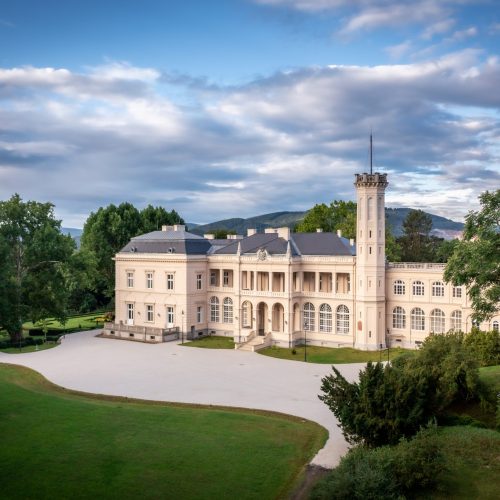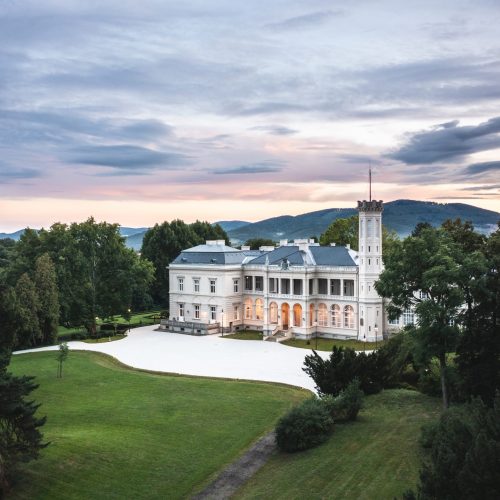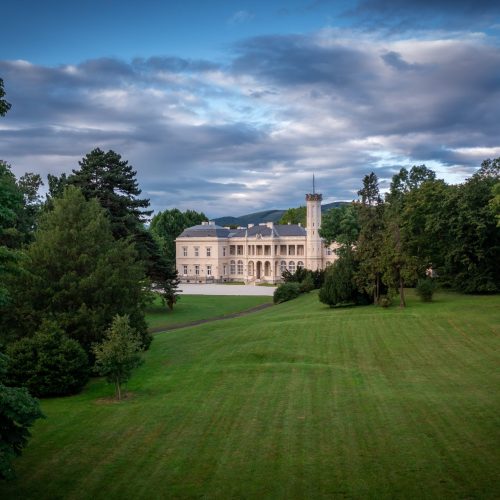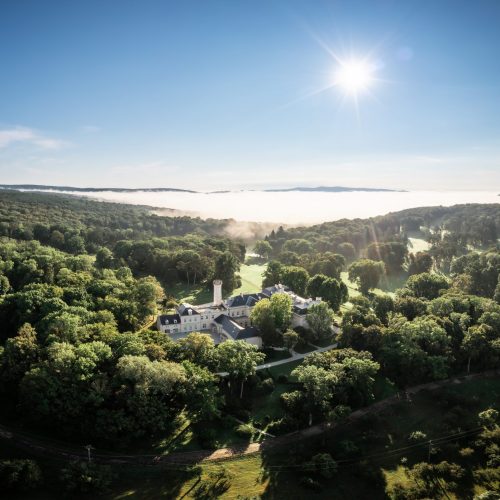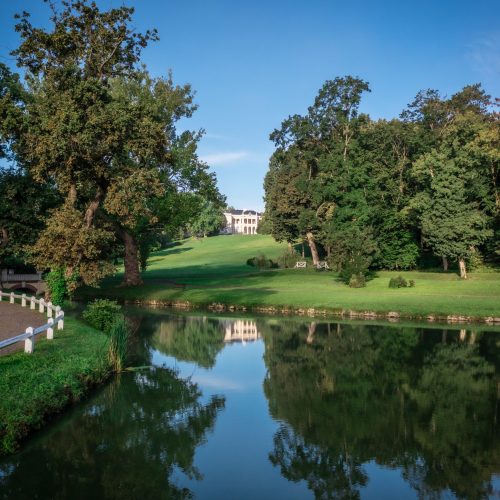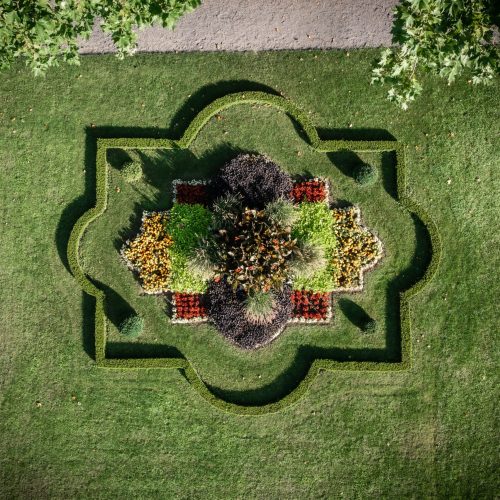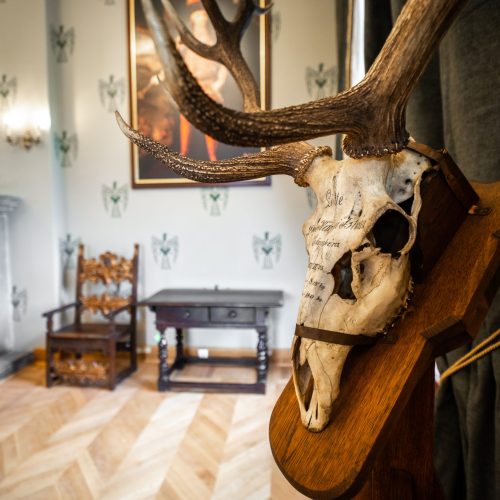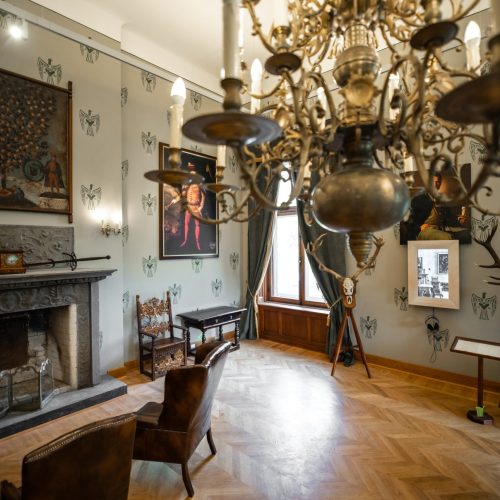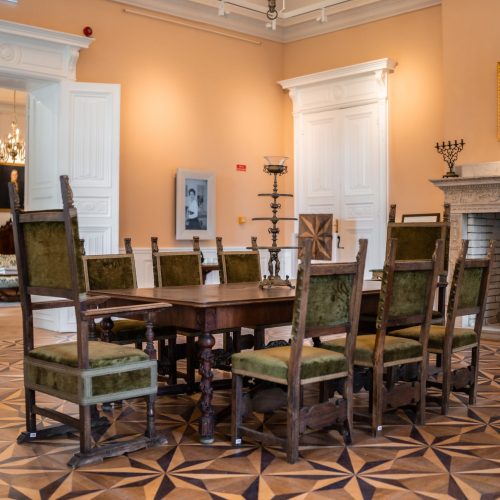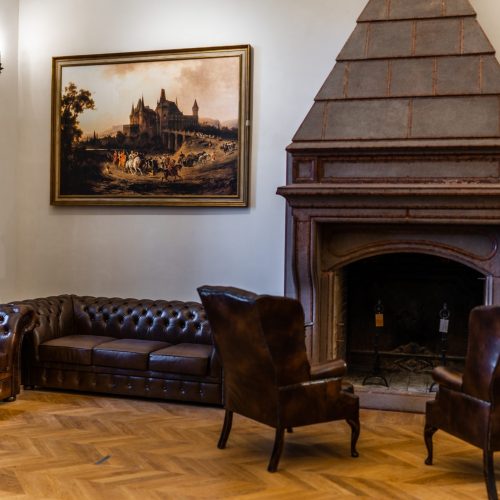In the Middle Ages, Radvány was mostly part of the estate of Füzér Castle. It was first mentioned in a charter in 1262. In the second half of the 16th century, it was owned by István Báthory, who, in 1585, bestowed the village on one of his familiares, Péter Réthey. Presumably, he was the one who had the first mansion, the ancestor of today’s palace, built here, in late Renaissance style. After that, the owner of the settlement changed several times, and a census was made of the palace in 1679.
In 1686, Leopold I, Holy Roman emperor and king of Hungary, bestowed the castle and the estates of Füzér on Baron László Károlyi of Nagykároly as compensation for his losses in the Turkish wars. It was then that the more than two-and-a-half-century history of the Károlyis’ possession of Radvány Palace began – with only a brief interruption. The Kaplony kindred.
The late Renaissance palace of Réthey was rebuilt and enlarged by various pledgees over several periods, but almost all the details of the L-shaped building were demolished during the time of Count Ede Károlyi.
He was the first Károlyi to choose Radvány as his permanent residence, reconstructing the palace over several periods, from 1846 until 1877.
Being an amateur designer, the count himself designed the concept. He commissioned Miklós Ybl, one of the most outstanding Hungarian architects employing the historicising style, for the design of the palace, whose role in this project may have been relatively limited. This is how the new, representative, U-shaped palace with two wings utilised as farm buildings, connected to it from the north, was finally formed.
The octagonal tower of the residence, for example, must have been born based on the idea of Ede Károlyi. According to Ybl Ervin’s note, later the members of the family therefore constantly mocked Ede Károlyi, calling him ‘fire poker’ due to his tall, slender, and a rather disproportionate physique.
In parallel with the construction of the residence, the garden was transformed into a landscape-style park, which by the end of the century had already covered about 240 acres.
Between 1897 and 1902, Count László Károlyi rebuilt the southern residential wing of the palace according to the plans of Albert Pio, however, the architect was still drawing up plans even in 1907, so the works most certainly dragged on.
A remarkable special feature of the palace, even in European terms, is the large number of incorporated secondary building structure elements from Italy. Between 1898 and 1913, Count László Károlyi and his wife, Countess Franciska Apponyi, bought complete Renaissance fireplaces, door frames and carvings, mainly in Florence – primarily from the art dealer Stefano Bardini – but also in Paris, which were built into the Füzérradvány palace. Renaissance and late renaissance furniture and works of art had also been purchased, with the use of which real museum-like interiors were created in the palace.
During the tenure of Count István Károlyi, as well as between 1936–1938 based on the plans of György Lehoczky, who also designed the pavilions of the palace garden, also housing rooms, the building was converted into a luxurious palace hotel.
At that time, the rooms upstairs were divided into suites, and tennis, ski and golf courses, as well as pool and apartment houses were built in the park. Embraced by a stunning park, this luxurious hotel opened its doors to visitors in 1938, and was operated by the family until 1948, with one interruption. Following the 1949 nationalisation, first a hospital, then later a sanatorium was established in the palace of Füzérradvány.
The historical restoration of the complex and its development into a tourist attraction took place between 2018 and 2021, within the framework of the National Palace and the National Castle Programme, financed by the (NÖF) National Heritage Protection Development Nonprofit Ltd.



